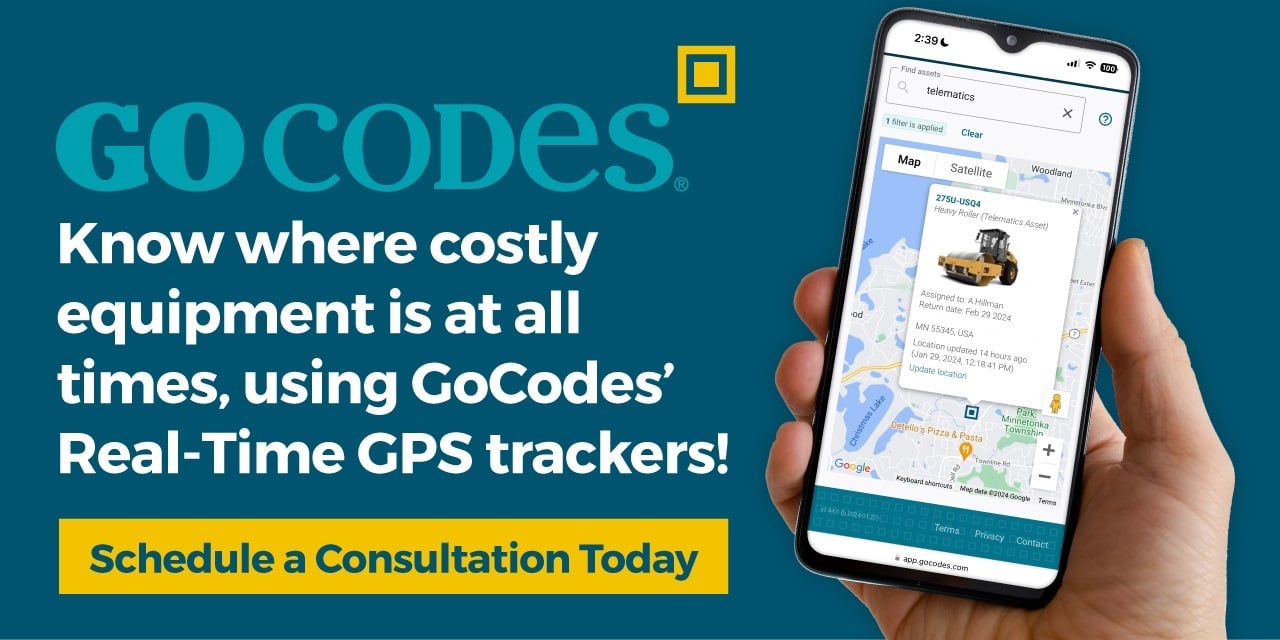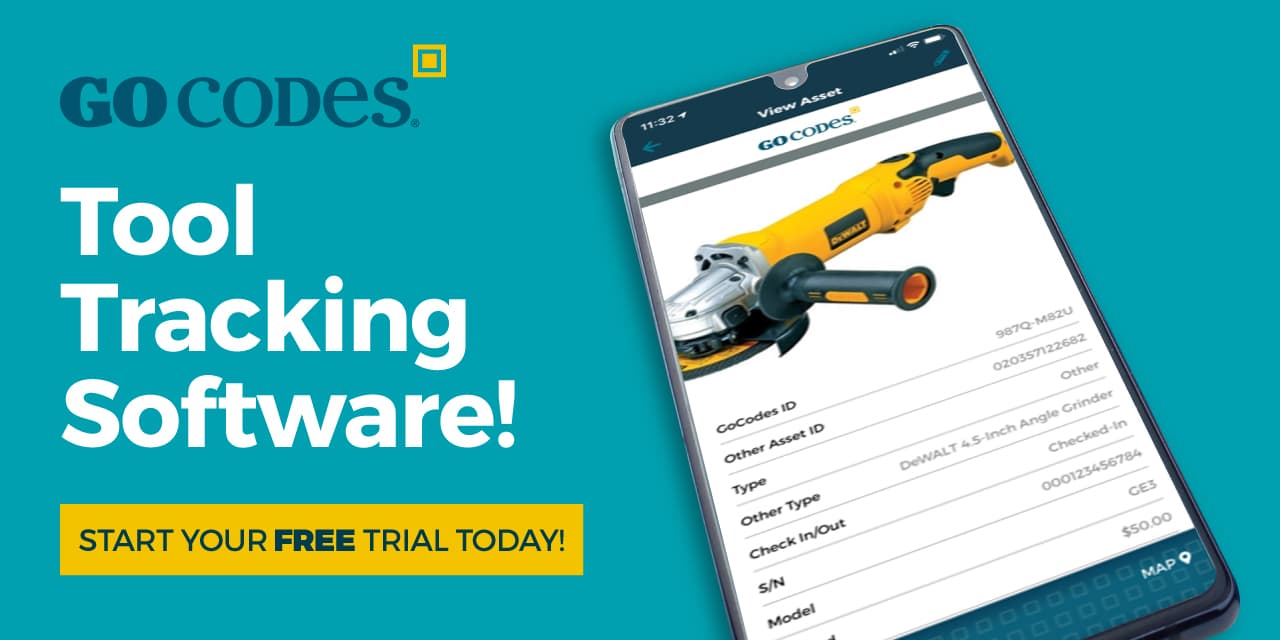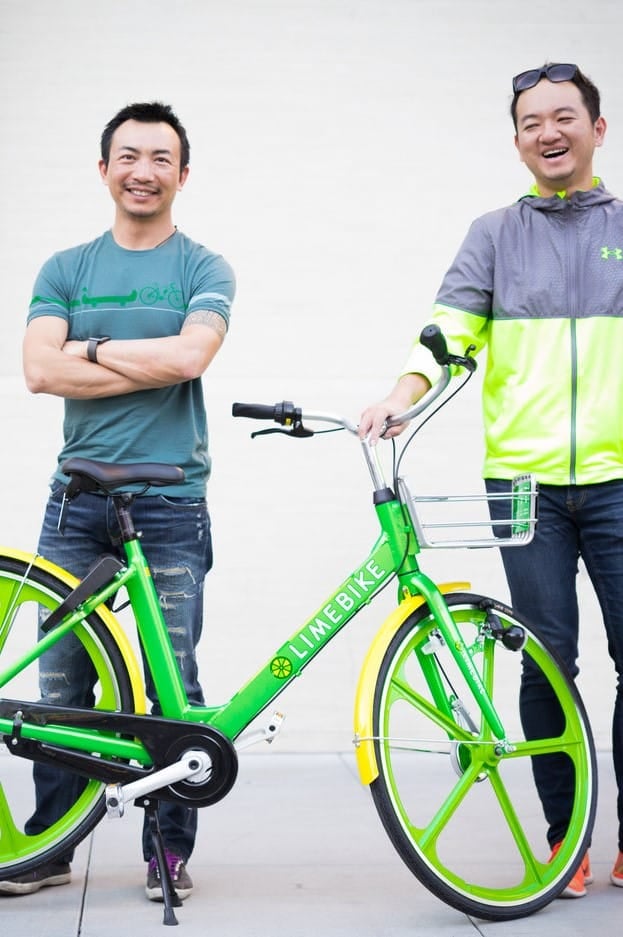Key Takeaways:
- Nearly half of fleets face serious financial losses due to unsafe driver behaviors.
- Aggressive driving and idling contribute to fuel drain and cause unnecessary engine wear.
- GPS tracking, telematics, and AI dashcams help curb distracted driving risks.
- Effective safety cultures rely on continuous monitoring and targeted coaching.
Did you know that 49% of fleets suffered serious financial hits from distracted driving alone?
While some fleet-related costs are unavoidable, risky driver behaviors like speeding, idling, and harsh braking erode your profits quietly and needlessly.
In this article, we’re breaking down the biggest problem behaviors and showing you how technology can help you tackle them in a simple and effective way.
In this article...
Speeding
Among all risky driver behaviors, speeding stands out as the most damaging to a construction company’s fleet budget.
With fuel considered to be the largest fleet operating expense by over half of fleet managers, it’s probably the first type of money drain that comes to mind.
However, speeding is also one of the most dangerous behaviors on the road.
According to the National Highway Traffic Safety Administration (NHTSA), it was a factor in nearly 29% of all traffic fatalities in a single year, ranking alongside alcohol impairment and non-restrained driving as a leading contributor to deadly crashes.
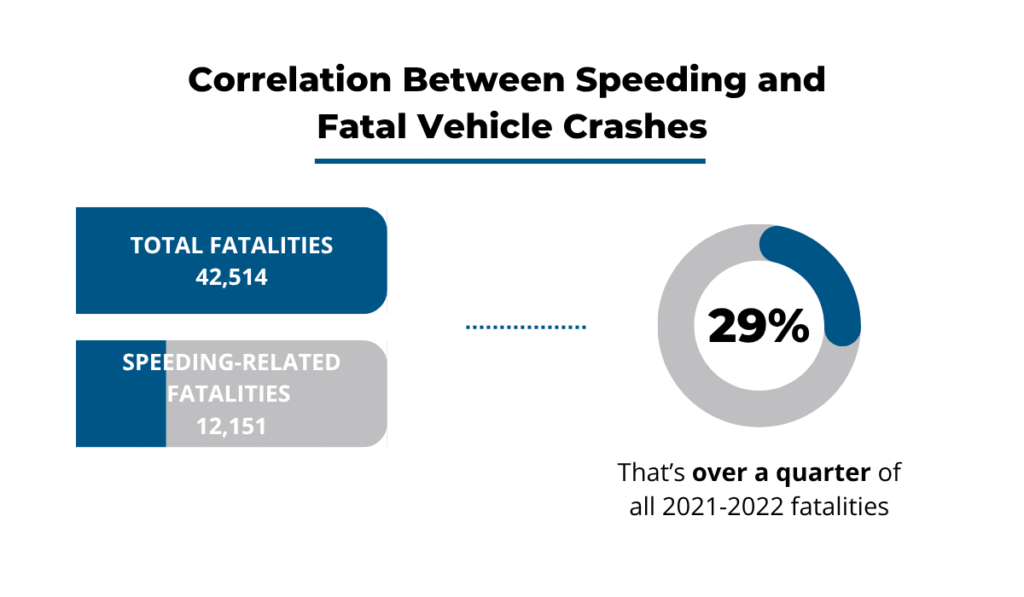
Illustration: GoCodes Asset Tracking / Data: NHTSA
And even if your drivers manage to avoid accidents, the costs quietly add up through higher insurance premiums and increased wear and tear on vehicles that are regularly driven at higher speeds.
Fortunately, modern telematics solutions give fleet owners a way to proactively tackle speeding before it turns into a major expense.
As Kerry Mooney, Product Manager at Wheels, notes:
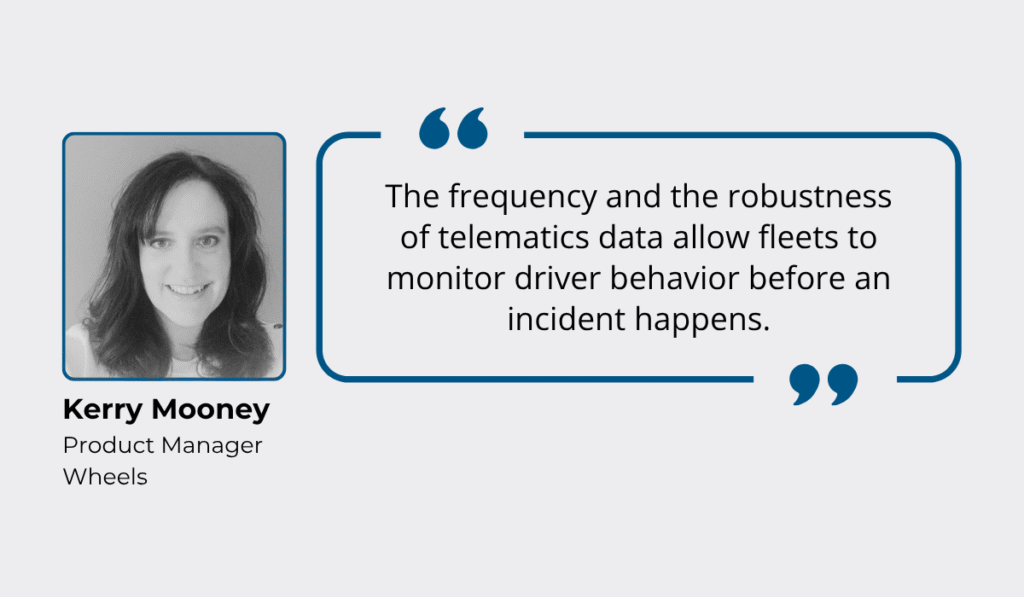
Illustration: GoCodes Asset Tracking / Quote: Wheels on YouTube
The key is to collect data and identify risky behaviors before they escalate.
Fleet managers can set up real-time speed alerts through their telematics platforms, customizing speed thresholds based on vehicle type, site location, or time of day.
For example, managers can create tailored speeding alerts to ensure stricter controls in high-risk areas, such as around active sites or within equipment yards.
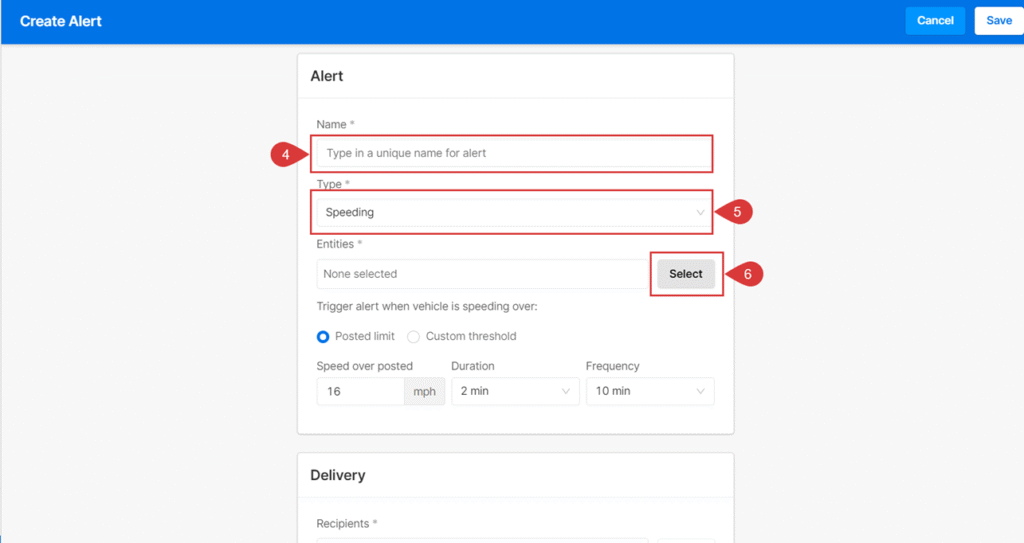
Source: Motive
Alongside in-cab audio warnings or notifications sent directly to managers’ devices, telematics systems track speeding trends over time, offering valuable insight into fleet-wide behavior.
GoCodes Asset Tracking’ telematics module lets you access general safety analytics and a dedicated speed management dashboard from any device.

Source: GoCodes Asset Tracking
Managers can compare data across different periods and monitor speeding events, as well as visualize high-risk zones using heatmaps.
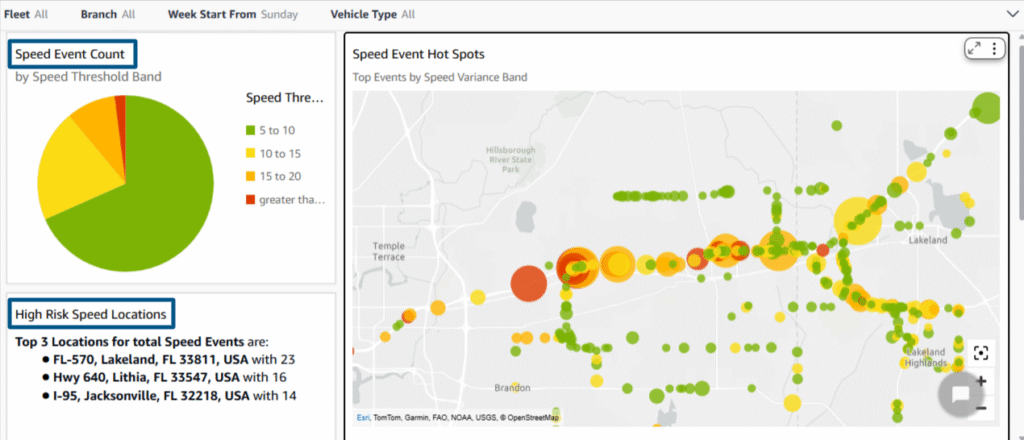
Source: GoCodes Asset Tracking
The ability to quickly generate detailed driver and vehicle reports can also help you uncover patterns and find the most effective way to correct unsafe habits through targeted coaching or policy updates.
Ultimately, the simplest way to curb dangerous, wasteful speeding is by using real-time data to detect risks early and improve fleet safety before they become costly problems.
Aggressive Maneuvering
Aggressive driving habits like harsh acceleration, sudden braking, and sharp cornering are another quiet drain on construction budgets.
And in today’s market, where rising operational costs have already placed significant pressure on the construction industry, you simply can’t afford to overlook it.
Recent price hikes in petroleum, natural gas, and other essential inputs are threatening to cripple project budgets.

Source: Construction Dive
In turn, this makes controlling unnecessary vehicle expenses—including those resulting from aggressive maneuvering—more important than ever.
Research from the Massachusetts Institute of Technology shows that aggressive driving behaviors can reduce a vehicle’s fuel economy by 15%–30% at highway speeds and 10%–40% in stop-and-go traffic.
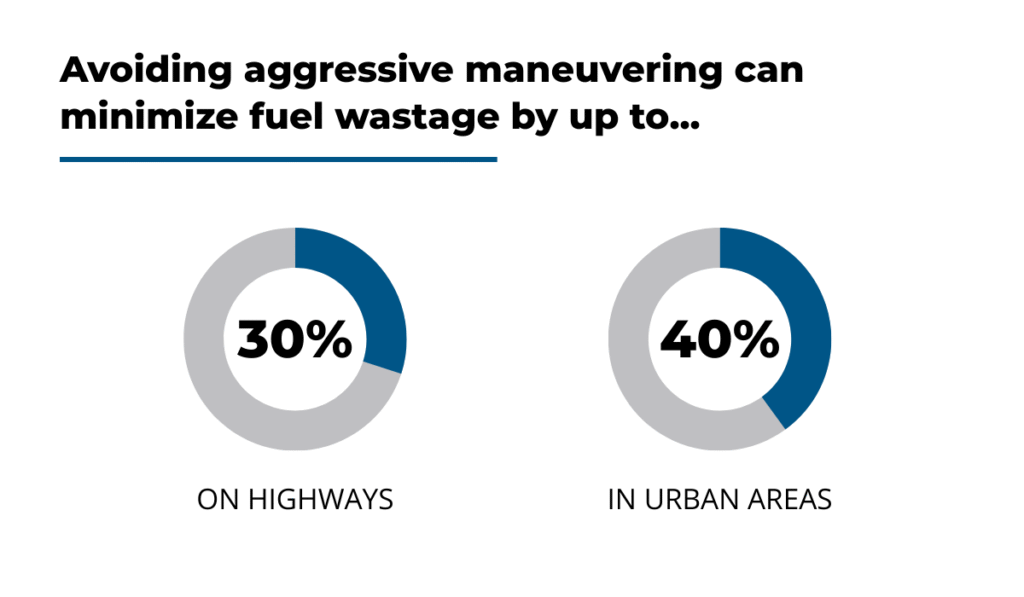
Illustration: GoCodes Asset Tracking / Data: Science Direct
Without proper insight and control over driver behavior, these hidden expenses quietly build up, affecting both profitability and vehicle condition over time.
Fortunately, the same telematics tools used to monitor speeding can also detect aggressive maneuvers.
In fact, a report from Automotive Fleet shows that nearly half of fleet managers now see GPS tracking and telematics as one of the most effective ways to curb harsh driving habits.
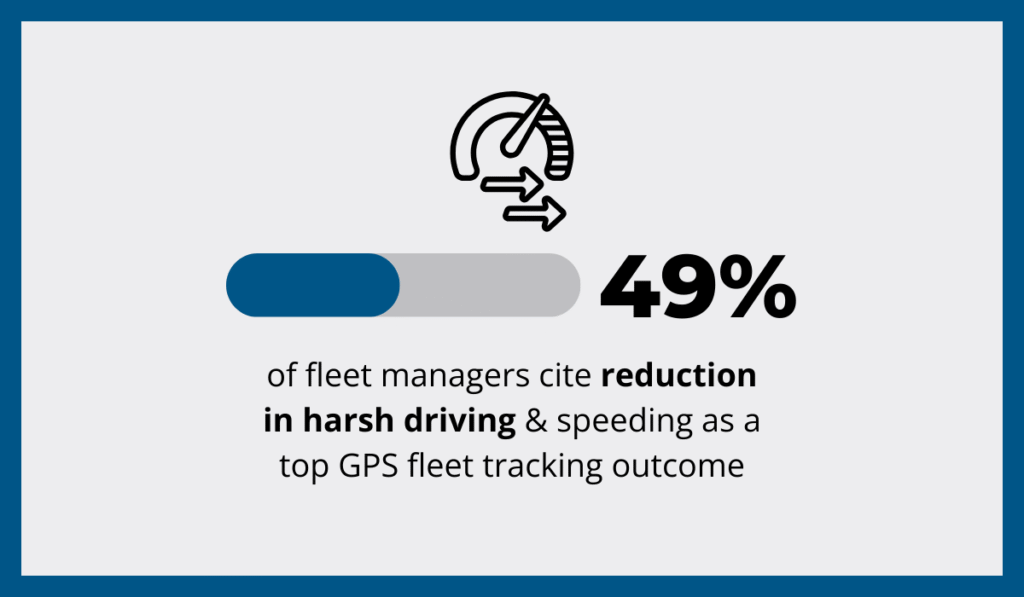
Illustration: GoCodes Asset Tracking / Data: Automotive Fleet
These systems work by making drivers aware that their behavior is being monitored, which alone helps reduce risky habits.
But the real advantage lies in the detailed insights these tools provide.
For example, driver scorecards consolidate data on metrics like distance traveled, driving time, and the frequency of specific events like rapid acceleration or hard braking.
The driver scorecard features key driving stats while aggregating risky events to calculate a final score that becomes the baseline for evaluations and giving feedback.
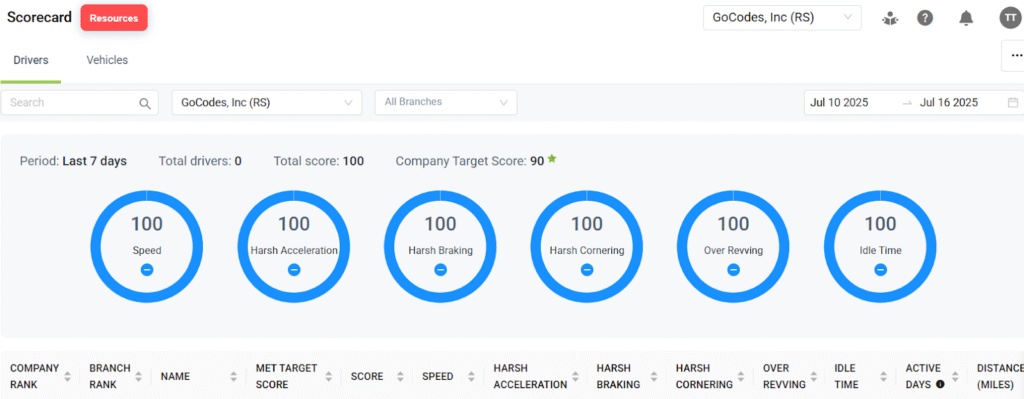
Source: GoCodes Asset Tracking
Many platforms now feature color-coded dashboards and multiple view options for easier monitoring.
Additionally, some even include automated coaching tools.
Fleetcam’s system, for instance, lets managers schedule refresher courses or targeted coaching based on consistently flagged behaviors.

Source: Fleetcam
In this case, coaching is a part of a structured escalation path that gives drivers the opportunity to self-correct while ensuring managers stay fully informed and in control.
The bottom line is that curbing harsh driving doesn’t have to be complicated.
With the right tools, you can effectively protect fuel budgets, lower maintenance costs, and keep your projects profitable.
Excessive Idling
Excessive idling is another common budget drainer in construction fleets.
This is particularly true in urban environments, on delivery runs, and on job sites where vehicles are often left running unnecessarily between tasks.
That’s why many companies have formal idling policies in place, aiming to cut fuel waste while also reducing environmental impact.
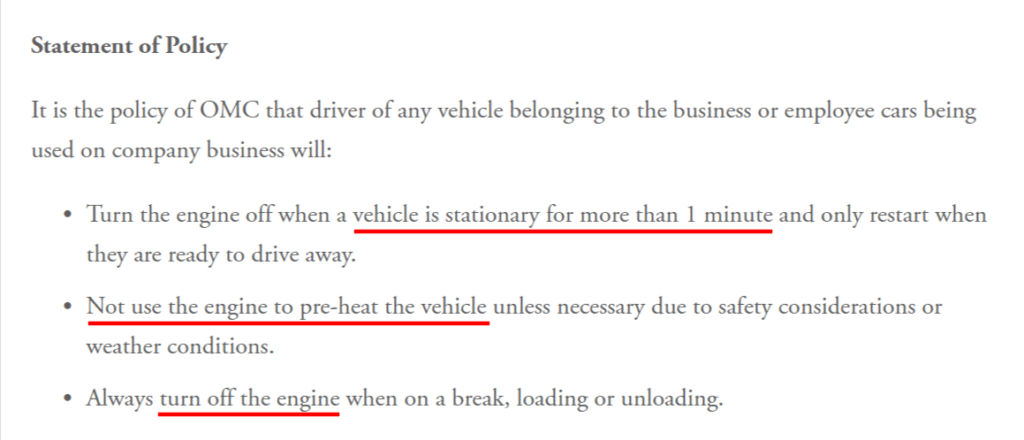
Source: O’Mahony Contractors
While these policies raise awareness of the issue among employees, their enforcement typically depends on employing cutting-edge technologies for driver monitoring.
As Mark Donahue, Fleet Analytics Manager at Emkay, explains:
Clients are utilizing the devices to monitor idling time, trip history, and route optimization to identify risks and reduce overall fuel expenditures.
The technology provides dashboards and reports that help managers track not just fuel use, but deeper operational risks tied to excessive idling.
For one, excessive idling has long-term consequences for engine health.
Prolonged idle periods cause engine parts to operate without proper movement, leading to corrosion, moisture buildup, clogged fuel injectors, and carbon deposits.
Over time, this can even trigger engine failure, which, according to Tenna, can cost between $20,000 and $40,000 to replace.
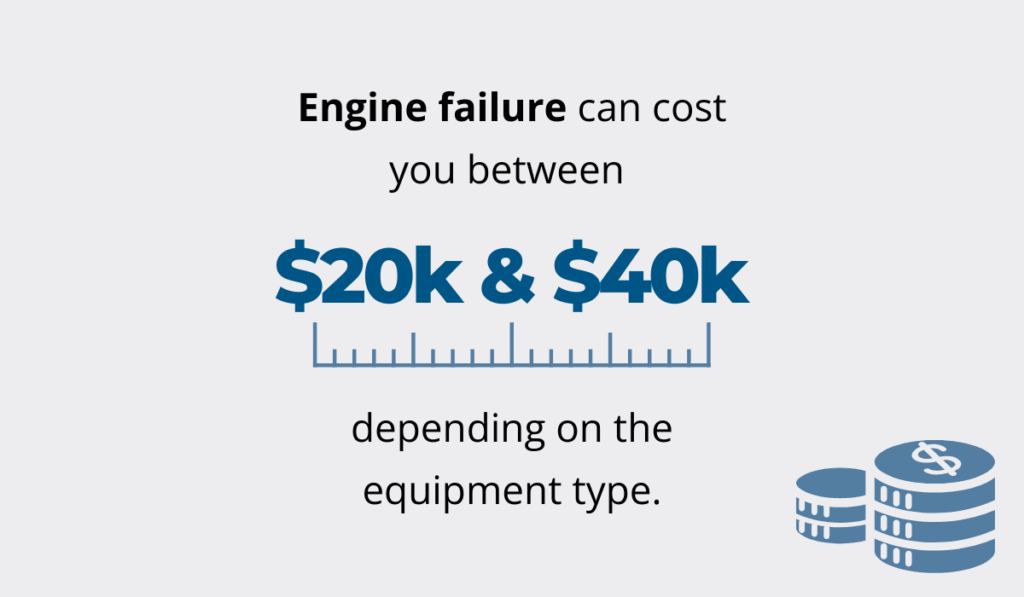
Illustration: GoCodes Asset Tracking / Data: Tenna
In other words, that’s one extra cost you absolutely want to avoid.
As noted by Geotab’s VP of Product Management, Sabina Martin, unexpected breakdowns and accelerated wear are major cost drivers that can easily disrupt operations.
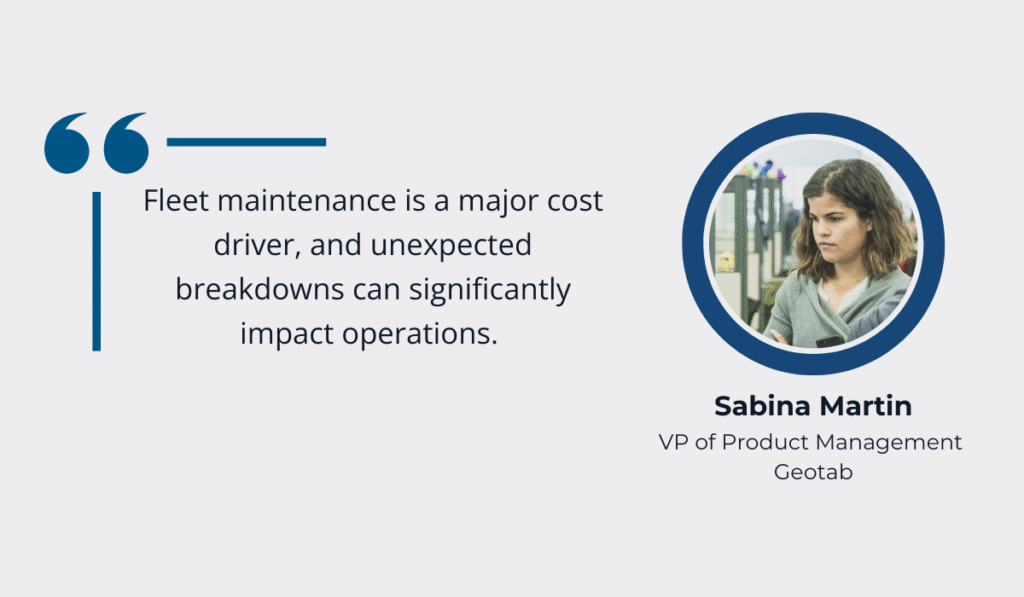
Illustration: GoCodes Asset Tracking / Quote: Automotive Fleet
To avoid major equipment damage and serious delays, companies are increasingly investing in enhanced engine fault data analysis.
But while engine diagnostics are vital, driver behavior monitoring remains equally important.
One telling case comes from Orkin, a pest control provider that manages 10,000 service vehicles.
They used a telematics system to address idling through a driver-facing contest, with prizes awarded to those who kept idle times the lowest.
The result? A reduction in idling by 8.4% and roughly $50,000 saved in just three months.
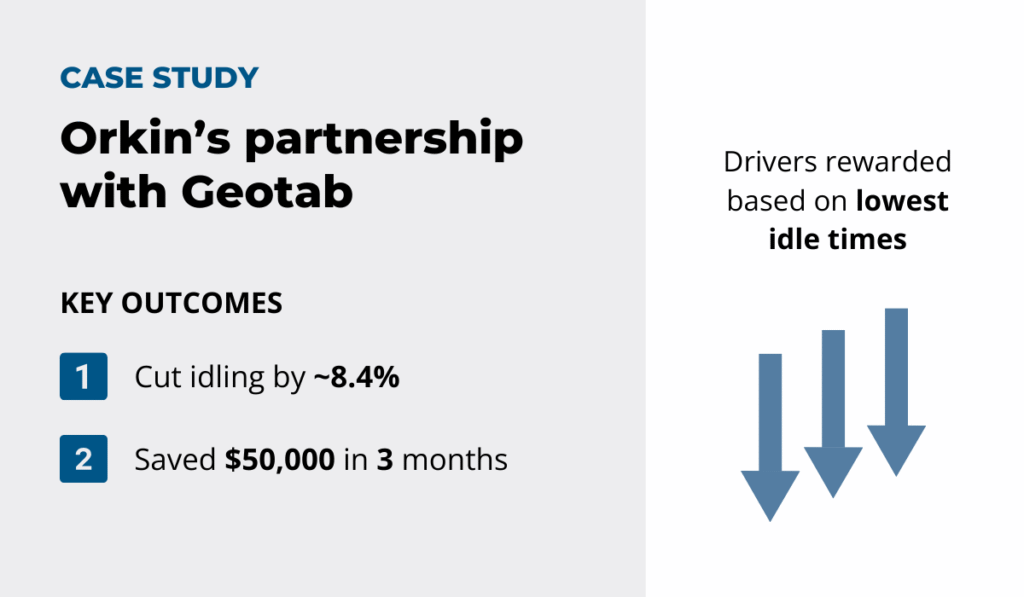
Illustration: GoCodes Asset Tracking / Data: Geotab
This example highlights how combining telematics data with gamification and positive reinforcement can successfully reduce harmful driving habits and protect both equipment and budgets.
To sum up, the most effective way to manage excessive idling is by using technology that detects, reports, and actively helps correct risky behaviors before they lead to serious costs.
Distracted Driving
Whether a driver is glancing at their phone, lighting a cigarette, or is simply too tired to focus, even a momentary lapse in attention while driving can lead to costly consequences.
According to Teletrac Navman’s 2024 telematics report, 70% of fleets have experienced incidents linked to distracted driving, and nearly half of those surveyed reported direct financial costs as a result.
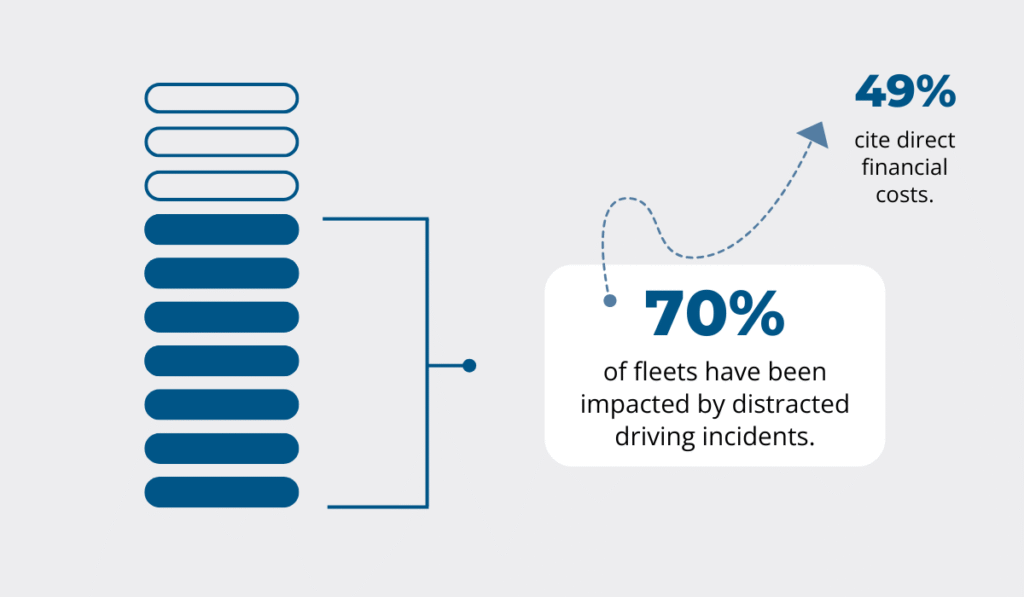
Illustration: GoCodes Asset Tracking / Data: Teletrac Navman
Not surprisingly, 68% of respondents identified mobile phone use as the leading cause or contributor to accidents on the road.
While it might seem like a momentary glance at a phone or screen isn’t a big deal, the consequences can be severe, both in terms of safety and financial impact.
Michal Yariv, former VP & GM of Strategic Initiatives at Solera Fleet Solutions, agrees, pointing to people’s inherently distractible nature and the risks it introduces behind the wheel.

Illustration: GoCodes Asset Tracking / Quote: TT News
And even with the driver’s hands firmly on the wheel, just a few seconds of inattention are enough.
A sobering example comes from Central Texas, with the footage below showing a distracted truck driver involved in a fatal crash.
Source: Fox 7 Austin on YouTube
Reportedly, the driver was glancing at a phone mounted near the steering wheel, which led to the death of the other driver.
Now, both the truck driver and their employer, J.B. Hunt, are being sued for negligence.
This case highlights how distracted driving doesn’t just cost lives, but also exposes companies to lawsuits and reputational damage.
Modern telematics systems help address these and similar risks by providing real-time insights into cab activity.
Forward-facing cameras detect close following and lane drifting, while driver-facing cameras, which are increasingly integrated with AI, track behaviors like gaze direction, yawning, or phone use, as shown below.

Source: Uffizio
Some detection systems now boast over 98% alert accuracy, ensuring that the majority of warnings are valid, and not another source of distraction or discontentment.
Keep in mind, however, that driver-facing cameras remain controversial.
On forums like Reddit, drivers often criticize them as excessive surveillance or tools for assigning blame.

Source: Reddit
Still, it’s essential to frame these tools as a way of ensuring everyone gets home safely, while also protecting both company assets and overall budget.
In the end, reducing distracted driving takes time, but using reliable technology to identify risks is a surefire way of building a positive, safety-first culture within your fleet.
Unauthorized Personal Trips
Unauthorized personal trips are an underreported but surprisingly common issue in fleet operations.
In construction, where vehicles are often left on-site or off-hours access is loosely controlled, it’s even easier to overlook the scale of the problem and the compounded effects of:
- Wasted fuel
- Unnecessary mileage
- Missed job timelines
- Accelerated wear and tear
All of these risks require tighter route management and monitoring.
John Wuich, VP of Strategic Consulting Services at Donlen, notes several positive outcomes, such as reduced mileage and fuel spend.
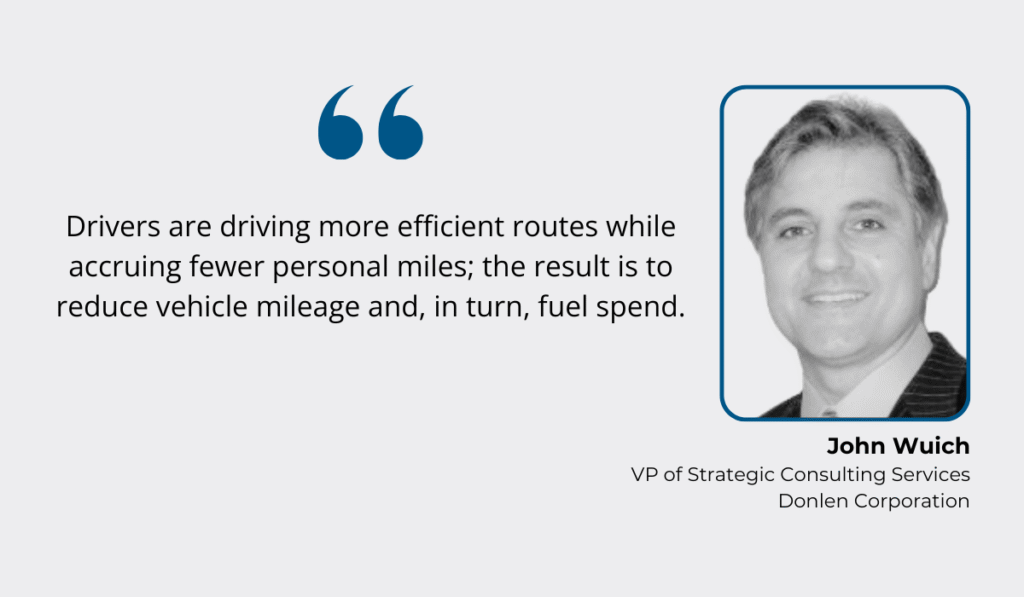
Illustration: GoCodes Asset Tracking / Quote: Automotive Fleet
Continuous monitoring is also important due to other liabilities.
While not every unauthorized trip results in an incident, a recent example in Michigan saw a fire department pickup truck damaged in a crash after being taken for personal reasons.

Source: ABC 12
Mayville attorney Adam Flory explained that the young firefighter trainee who crashed the vehicle faced no obstacles to accessing it and had even brought along two teenage passengers.
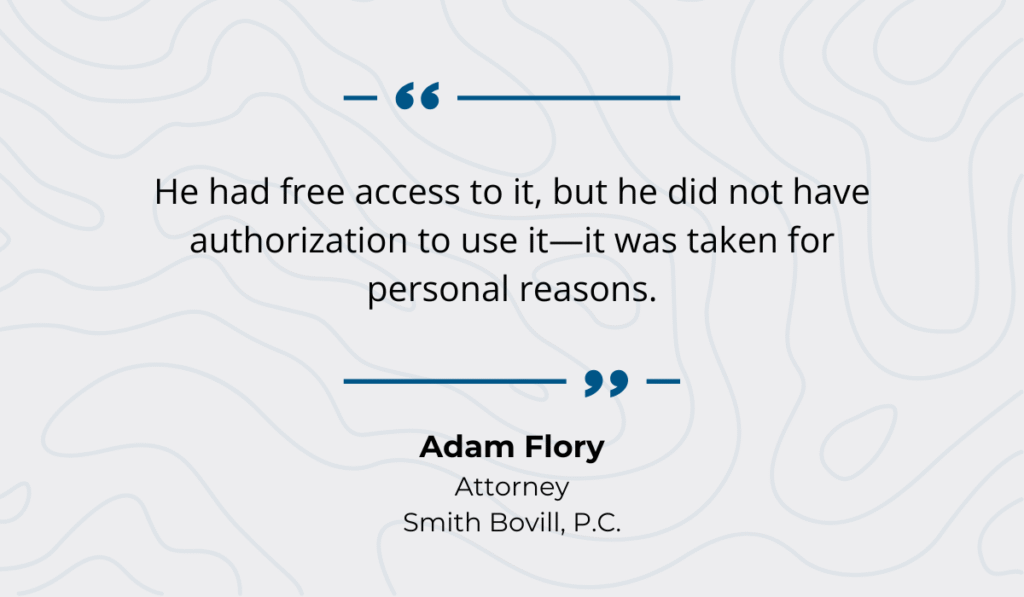
Illustration: GoCodes Asset Tracking / Quote: ABC 12
While no one was injured in this case, the consequences could have been far worse, from loss of life to potential legal entanglements.
Personal trips can quietly become a habit, draining fuel, inflating maintenance costs, and potentially exposing the company to legal action if an accident occurs.
Moreover, it’s not difficult to imagine how a similar situation in construction could easily turn deadly, especially if vehicles are accessible after hours or stored off-site.
The best way to prevent all this is by using real-time GPS trackers.
A reliable GPS tracking system ensures that every trip can be tracked on the map, with additional data available through reports afterwards.
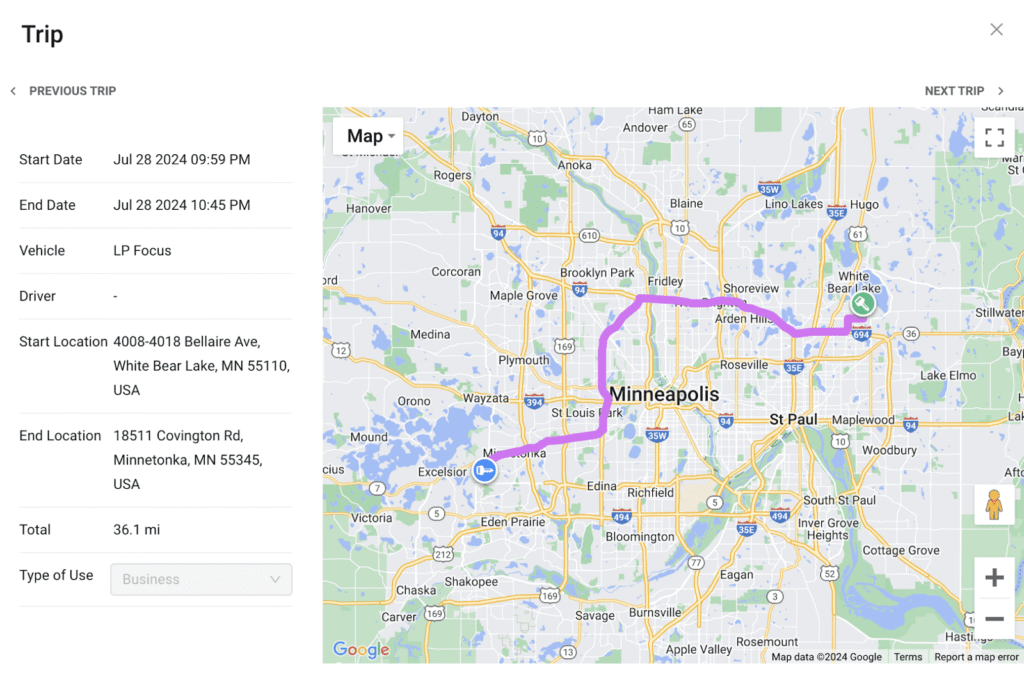
Source: GoCodes Asset Tracking
Moreover, features like geofencing allow managers to define additional digital boundaries around approved job sites, depots, or storage areas.
This allows you to carefully monitor entry and exit times and prevent any misuse, vandalism, and even attempted theft.
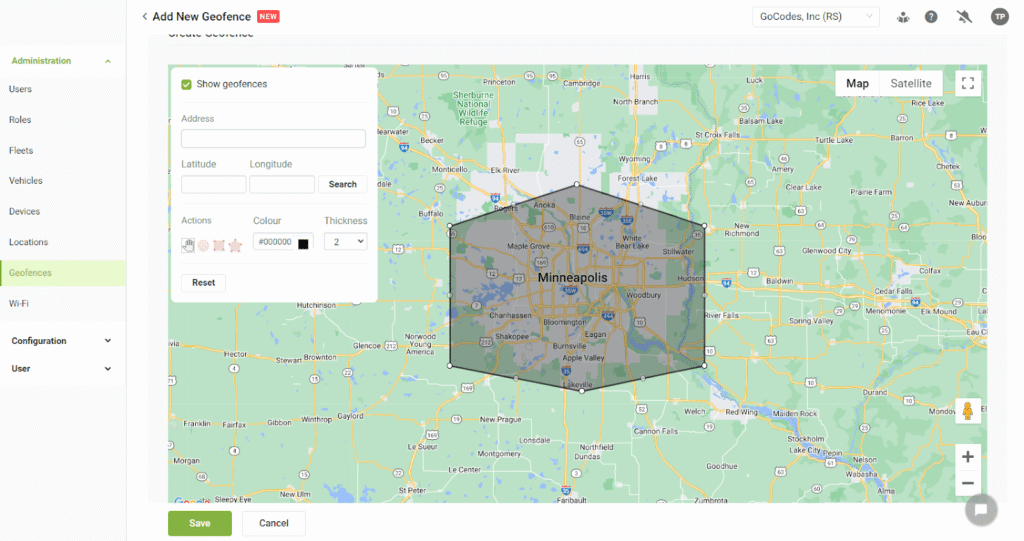
Source: GoCodes Asset Tracking
The trick is in instant alerts.
If a vehicle crosses those boundaries or moves outside working hours, managers are immediately notified, enabling them to maintain accountability and address the issue in real time.
Left unchecked, unauthorized vehicle use quietly eats into your profits, increases liability, and damages fleet equipment.
But when you use the right technology, this and other risky behaviors are entirely preventable.
Conclusion
Ultimately, whether it’s speeding, aggressive driving, or unauthorized trips, the biggest financial risks come from what you can’t see.
The one thing that chips away at your margins through fuel waste, equipment damage, and liability exposure is the lack of visibility and awareness about your drivers’ and operators’ habits.
The good news? Modern fleet tech makes these risks more visible and enables you to act on mitigating them.
Invest in the right tools, pair them with clear policies, and follow through on the data you collect.
You’ll build a safer, leaner, and far more cost-efficient fleet operation in no time.


